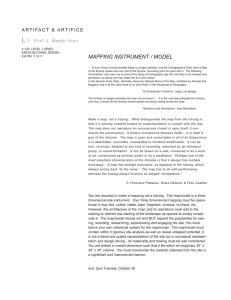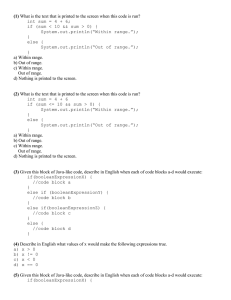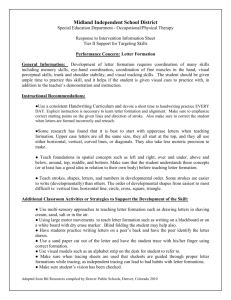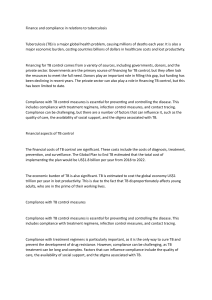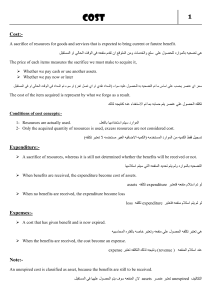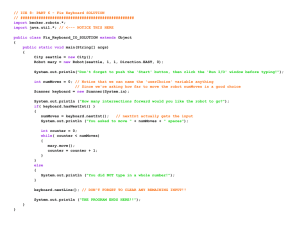Output Trace Table
advertisement
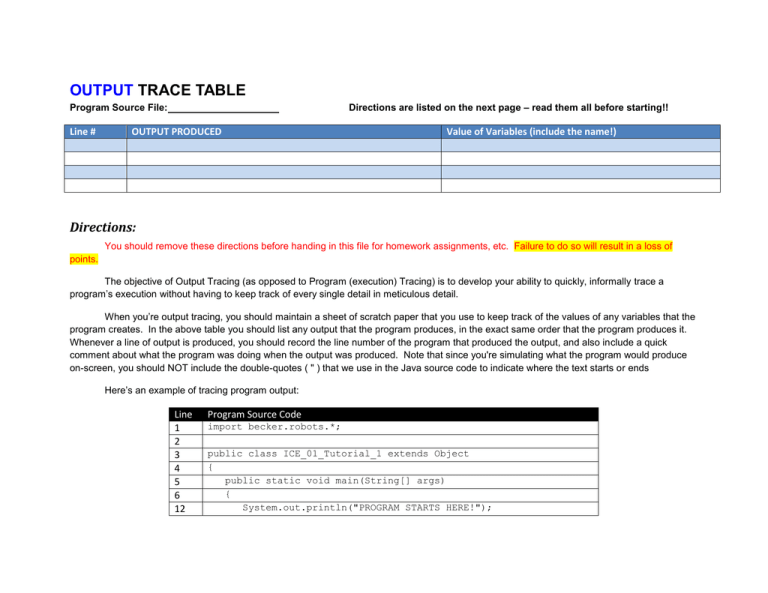
OUTPUT TRACE TABLE
Directions are listed on the next page – read them all before starting!!
Program Source File:
Line #
OUTPUT PRODUCED
Value of Variables (include the name!)
Directions:
You should remove these directions before handing in this file for homework assignments, etc. Failure to do so will result in a loss of
points.
The objective of Output Tracing (as opposed to Program (execution) Tracing) is to develop your ability to quickly, informally trace a
program’s execution without having to keep track of every single detail in meticulous detail.
When you’re output tracing, you should maintain a sheet of scratch paper that you use to keep track of the values of any variables that the
program creates. In the above table you should list any output that the program produces, in the exact same order that the program produces it.
Whenever a line of output is produced, you should record the line number of the program that produced the output, and also include a quick
comment about what the program was doing when the output was produced. Note that since you're simulating what the program would produce
on-screen, you should NOT include the double-quotes ( " ) that we use in the Java source code to indicate where the text starts or ends
Here’s an example of tracing program output:
Line
1
2
3
4
5
6
12
Program Source Code
import becker.robots.*;
public class ICE_01_Tutorial_1 extends Object
{
public static void main(String[] args)
{
System.out.println("PROGRAM STARTS HERE!");
13
14
15
16
17
18
19
20
21
int x = 0;
while( x < 2 )
{
System.out.println("x is: " + x );
x = x + 1;
}
System.out.println("PROGRAM ENDS HERE!");
}
}
Line #
OUTPUT PRODUCED
12
16
16
19
PROGRAM STARTS HERE!
x is 0
x is 1
PROGRAM ENDS HERE!
What’s Happening Near The Line That Causes The Output
(Quick summary, in your own words)
Pre-loop message is printed
First time through the loop
Second time through the loop
After-loop message is printed

